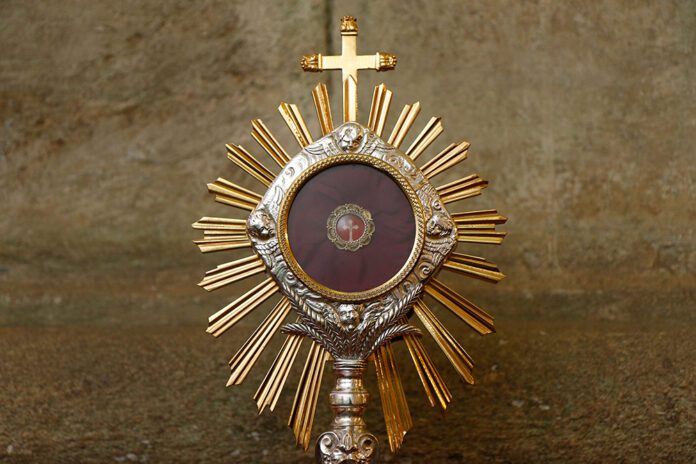When my mother died almost 11 years ago, it was important to me to keep something of hers, something that was meaningful to her. I still have her bible in the nightstand beside my bed with her handwritten notes in the margins and underlined favorite passages. I am a big baseball fan, and someday I will inherit a baseball bat and several baseballs autographed by every member of the 1979 Pittsburgh Pirates, the last Pirates team to win the World Series. I love American history and greatly admire George Washington. My family and I have been to his home, Mount Vernon, and seen his war tent from the Revolutionary War. To varying degrees, these artifacts keep alive the memory of those who used them.
Relics function in this way as well, reminding us that the saints we read about are not made-up characters from a galaxy far, far away. They are real flesh-and-blood people with bones and possessions. Their relics invite us to pause and ponder how knowing Jesus changed their lives, how they brought faith to bear on the world around them, and how many of them gave their lives for following Jesus. However, beyond simply reminding us of these holy men and women, relics are also a vehicle through which God chooses to give grace.
This is not some “Catholic stuff” that was “added” to the true and pure faith of the apostolic age. The veneration of relics and God’s use of them to give grace goes all the way back to the earliest chapters of the Bible. There are some Jewish traditions that say Joseph’s robe of blessing in Genesis 37:3 was the very same garment with which Shem and Japheth covered Noah in Genesis 9:23, the very same garment made by the hand of God to cover Adam after the Fall in Genesis 3:21. 2 Kings 13:20-21 recounts how contact with the bones of the deceased Prophet Elisha brought a dead man back to life. In Acts 19:12, handkerchiefs that touched St. Paul while he was alive healed the sick and cast out demons. Relics can put us in touch not only with the memory of a holy person but with the Lord who made them holy.
In the earliest days of the Church, Mass was often celebrated directly on top of the tomb of a saint. It was a visible reminder that the faith celebrated in that Mass was the same faith of that holy person entombed beneath the altar. Revelation 6:9 even describes the souls of martyrs praying beneath the altar. As Christianity spread throughout the world and in order to keep this practice alive, bits of bones from the saints were carried to new altars. Even today, fixed altars are to contain a first-class relic of a saint (see Code of Canon Law no.1237.2).
In common usage, there are three classes of relics, although the Church officially uses the terms significant relics and non-significant relics. A first-class relic is a part of a saint’s body. This may be as small as a piece of bone, as large as a full skeleton, or anywhere in between. These relics typically have a document of authenticity certificated by an ecclesial authority. A second-class relic is an item that was used by a saint, such as clothing, a tool, or even a toy. Finally, a third-class relic is an item, most often a piece of cloth or a religious medal, that has touched the body of a saint.
People will often make a pilgrimage of sorts to Cleveland to visit the Rock ‘n Roll Hall of Fame or to Cooperstown to see the artifacts in the Major League Baseball Hall of Fame. History buffs go on pilgrimage to Gettysburg and Philadelphia to remember the past and ponder the future. But we can also go on an actual pilgrimage, a religious excursion, to venerate the largest collection of relics outside of the Vatican in Pittsburgh’s at St. Anthony’s Chapel (pghshrines.org). We should also recognize that simply entering our churches puts us in the presence of relics and in the presence of the One who made these men and women holy and still uses their relics as vehicles of grace today.






